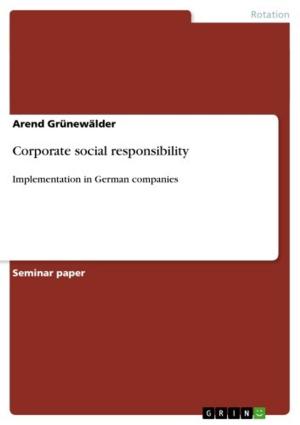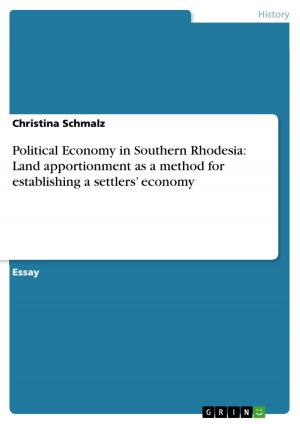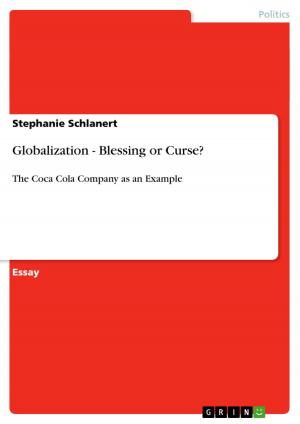Critical Reflection of the U.S. Subprime-crisis' origin by using Hofstede´s theory of cultural dimensions
Nonfiction, Reference & Language, Language Arts, Communication| Author: | Pascal Naue, Oliver Möller | ISBN: | 9783640670116 |
| Publisher: | GRIN Publishing | Publication: | July 27, 2010 |
| Imprint: | GRIN Publishing | Language: | English |
| Author: | Pascal Naue, Oliver Möller |
| ISBN: | 9783640670116 |
| Publisher: | GRIN Publishing |
| Publication: | July 27, 2010 |
| Imprint: | GRIN Publishing |
| Language: | English |
Seminar paper from the year 2009 in the subject Communications - Intercultural Communication, grade: 1,7, University of Applied Sciences Essen, language: English, abstract: Many existing explanation attempts generally deal with the question: What has caused the Subprime-crisis ? However none of them tries to explain why the crisis originated particularly in the United States. This paper has the general objective to critically reflect the reasons why the Subprime-crisis originated specifically on the American real estate market and delivers a different approach to the inherent question. The reflection is based on the cultural studies of Geert Hofstede and his concept of the four cultural dimensions. Due to formal restric-tions concerning the length of this paper the focus lies on two of the four cultural di-mensions : The dimension individualism vs. collectivism and the uncertainty avoidance dimension. To allow a transfer of this theory into practice, it is necessary to reach a common under-standing of both perspectives. Therefore the paper is separated into a theoretical and a practical part: The objective of the theoretical part is to comprehend and represent the theory and characteristics which Geert Hofstede identified and assigned to the selected cultural dimensions. The practical objective is to apply the theory to real events by examining concrete ex-amples. By demonstrating the extent of the chosen characteristics in the American cul-ture, the paper develops a possible explanation for the reasons that led to the origin of the credit crisis in the USA. For a better understanding of the course of this practical examination, it is carried out in two separate parts: the first part critically represents the selected cultural dimensions in the USA, whereas the second part creates a common understanding of the Subprime-crisis and concludes the ideas of the first part with direct reference to the crisis. To guar-antee objectivity both parts are critically commented on at the end of each section by summarising the critical points in regard to the concepts of Hofstede
Seminar paper from the year 2009 in the subject Communications - Intercultural Communication, grade: 1,7, University of Applied Sciences Essen, language: English, abstract: Many existing explanation attempts generally deal with the question: What has caused the Subprime-crisis ? However none of them tries to explain why the crisis originated particularly in the United States. This paper has the general objective to critically reflect the reasons why the Subprime-crisis originated specifically on the American real estate market and delivers a different approach to the inherent question. The reflection is based on the cultural studies of Geert Hofstede and his concept of the four cultural dimensions. Due to formal restric-tions concerning the length of this paper the focus lies on two of the four cultural di-mensions : The dimension individualism vs. collectivism and the uncertainty avoidance dimension. To allow a transfer of this theory into practice, it is necessary to reach a common under-standing of both perspectives. Therefore the paper is separated into a theoretical and a practical part: The objective of the theoretical part is to comprehend and represent the theory and characteristics which Geert Hofstede identified and assigned to the selected cultural dimensions. The practical objective is to apply the theory to real events by examining concrete ex-amples. By demonstrating the extent of the chosen characteristics in the American cul-ture, the paper develops a possible explanation for the reasons that led to the origin of the credit crisis in the USA. For a better understanding of the course of this practical examination, it is carried out in two separate parts: the first part critically represents the selected cultural dimensions in the USA, whereas the second part creates a common understanding of the Subprime-crisis and concludes the ideas of the first part with direct reference to the crisis. To guar-antee objectivity both parts are critically commented on at the end of each section by summarising the critical points in regard to the concepts of Hofstede















